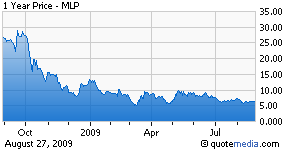Here is the PDF file for the Hawaii Seed Crops report.
Please visit the website for more information: http://www.nass.usda.gov/hi/
Hawaii Seed Crops
————————————————————-
Contact Information:
Mark E. Hudson, Director
USDA NASS Hawaii Field Office
1421 South King Street
Honolulu, HI 96814-2512
Office: (808) 973-9588 / (800) 804-9514
Fax: (808) 973-2909
————————————————————-
Seed Crop industry valued at record high $176.6 million

Click for Larger Image
Outshipments of seed are anticipated to total 10.1 million pounds during the 2008/09 season, up 20 percent from the revised 8.4 million pounds shipped during the 2007/08 season.
Acreage harvested for all seed crops is expected to total a record high 5,930 acres during the 2008/09 season, up 12 percent from the 2007/08 season.











 MLP, which owns 24,500 acres primarily in Maui, Hawaii, including 10.6 miles of ocean frontage with 3300 of lineal feet along sandy beaches, has fallen on hard times during the recession. The company recently reported a $54 million loss for the second quarter, which included more than $37 million in writedowns, $21.3 million of which represented a decrease in value of the Company’s investment in the Kapalua Bay resort. Clearly, the downturns in real estate prices and resort visitors has been a double whammy for MLP. The stock now trades at $6.22, down 79% from its 52 week high of $29.69.
MLP, which owns 24,500 acres primarily in Maui, Hawaii, including 10.6 miles of ocean frontage with 3300 of lineal feet along sandy beaches, has fallen on hard times during the recession. The company recently reported a $54 million loss for the second quarter, which included more than $37 million in writedowns, $21.3 million of which represented a decrease in value of the Company’s investment in the Kapalua Bay resort. Clearly, the downturns in real estate prices and resort visitors has been a double whammy for MLP. The stock now trades at $6.22, down 79% from its 52 week high of $29.69.